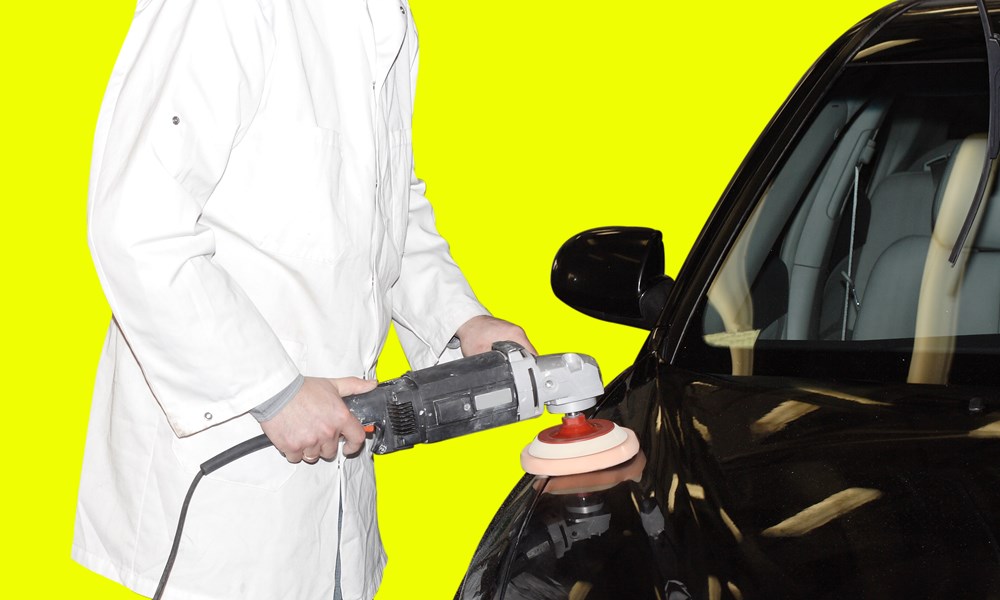Choosing the Right Wax for Your Car

Protecting your car’s paint work ensures that your vehicle looks great and is resilient to the rigors of driving on the road and constant exposure to the elements. Dirt and debris on the road surface quickly and easily flicks up onto your car’s paint work, causing chips and small dents. Exposure to bright sunlight can quickly take its toll too, leading to faded, patchy coloring. Waxing your paint work won’t completely eliminate the risk of these types of damage, but it will certainly help, so it’s a good thing to add to your maintenance schedule. With so many types of car wax on the market, how do you know which one to use? Mercedes-Benz of Silver Spring is here to help.
Car wax normally contains some form of natural wax, such as carnauba wax or beeswax. Most are sold in a clear format, so can be applied to any color paint work. Some enthusiasts prefer a colored wax if they are able to match it exactly to the color of their paint work. Ask the Mercedes-Benz of Silver Spring team for advice on colored wax that can match your car.
Car wax is then offered in two further forms. A cleaner wax will clean, polish, and protect the car, all through one product. These products often contain carnauba wax. A finishing wax will not have any cleaning capability and is used to focus on protecting the paint work and creating a superb finish. These products are often called show car waxes.
So what form of wax is best for your car?
Liquid wax. Liquid wax gives a great finish, and can be buffed by a novice or an expert to achieve a very glossy look. Liquid wax is normally very durable too, so it doesn’t need to be re-applied as often as other products.
Liquid wax is probably the hardest to apply to the paint work very quickly. The liquid form is difficult to manage, because it’s very easy to use too much, resulting in a lot of mess and wastage. According to the type of liquid wax that you use, it can be a race against time to buff out the wax to a good finish before it dries on the car. While it is always better to apply wax in warm weather, this can work against you with liquid wax, which will dry more quickly.
Paste wax. Paste wax is probably the easiest to apply. The consistency means that you can easily apply just the right amount, and you won’t find lots of mess and wastage like you would with a liquid wax. Paste wax may be a good option for a beginner, who is looking for something that doesn’t require a lot of skill, partly because the wax dries very quickly.
Paste wax is very susceptible to temperature, however, and is therefore extremely difficult to apply in the colder months. You always need to apply paste wax on a warm day, or in a heated garage. Paste waxes don’t tend to produce as good a finish as liquid waxes, and don’t always protect the paint work as well as other products. You do tend to waste a certain amount of paste wax in the bottom of the container, because it is very difficult to get out.
Spray wax. Spray waxes are particularly good for new cars, where the paint work is brand new and shiny. They’re very convenient to use, and have a lighter finish, so can normally be used on a variety of different surfaces on the car, including plastic. There’s generally no waste with a spray wax, as you apply just the amount you want, and they’re also less reliant on warm weather. Spray wax is a great option if you are looking simply to touch up a small area of the car, due to the ease of application. You can also quickly and easily wipe off a spray wax if it ends up somewhere you don’t want it to.
Spray waxes are the most superficial of the different wax products, however. They generally offer only a very thin layer of protection, and therefore need to be re-applied frequently. A spray wax would not be suitable for an older car, where the paint work needs more care and attention.
